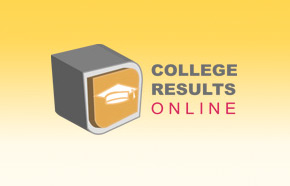5 financial aid keys to improve award packages
The easiest thing students can do to earn free money for college is get good grades and test well on the standardized tests (SAT/ACT). Now this doesn’t start when your student is in the middle of their senior year of high school. Start good grades when you are a Freshman in high school.
Yeah-yeah I know you would rather party, shop or play Xbox, but if you want to land enough financial aid for the upcoming college year you’ve got to do some work. And it starts early on in high school.
Parents and students have had a one-two punch with the economic crash, which has affected both household assets as well as higher education institution’s assets. The end result is more competition for less aid.
For parents and students in search of financial aid, success hinges on two key factors: filling out applications early and thoroughly. One wrong answer can mean the difference of thousands of dollars of aid lost. And with the clock ticking on most financial aid forms, this is one assignment you really shouldn't procrastinate on.
The first time you can fill out the federal financial aid form is January of your students Senior year of high school.
Here are 5 keys to secure as much financial aid as possible.
1. Don’t believe the FAFSA Deadline. It is first come first serve. You snooze, you lose. The Pie is only so big. While the Free Application for Federal Student Aid (FAFSA) form typically is accepted until the end of June (for the 2009-2010 academic year, it's accepted until June 30, 2010), to get a sizeable financial aid package, students will need to file their FAFSA within the first few weeks of availability. Individual colleges and universities set their own priority deadlines, which tend to fall somewhere between mid-January and the beginning of March 2009 for incoming college students
Wait too long and the financial aid pie shrinks. Do you want crumbs or a nice slice?
2. Make sure the college knows your financial situation. A family’s financial situation is a key determinant in the amount of aid a student receives. The only thing on the financial aid form is a list of questions pertaining to money and numbers. Nowhere on the form does it ask if you were recently laid off or downsized, or had to pay excessive medical bills. College financial aid offices won't open their tightfisted palms unless they think you really need it. It's up to you to convince them.
Financial aid is based on an estimate of what the family’s tax return will look like for the year. But given this year’s crazy economic environment, which saw spikes in unemployment and many salaries chopped. To help improve the chances of receiving more financial aid, students or their parents should contact the college’s financial aid office and explain any recent changes in the family's financial situation.
3. Beware of Scholarships. But I thought scholarships were good, you say. Even a few thousand dollars in scholarships can mean the difference between attending that pricey dream school versus going to your local back-up college. However, before students start applying for every scholarship they can get their hands on, they should consider the drawbacks. Landing a scholarship, or several scholarships, can actually decrease the amount of money a university or college is willing to give you in financial aid. Yep you heard that right, decrease. Many aid offices account for that free money as an asset they weigh into their aid calculations. Before applying for scholarships, ask the college’s financial aid office how they’ll affect your financial aid package. Plus check to see if the private scholarship you are aiming for is renewable. You may win $1,000 bucks for this year and the college will cut your financial aid package by that much. But what about next year? If that scholarship is not renewable and the college or university doesn’t account for this loss the following year it will cost you that much more.
4. Ask. The worst thing a family in need can do is give up. If you aren't satisfied with the financial aid package you receive, appeal to the college's financial aid office for a bigger one. Since some aid may free up later in the year (say, if they extend aid to a student who decides to go to another school) it's always worth a shot.
Just be prepared for the plea to backfire. Because you are opening the door for financial aid officers to rummage deeper into the family's finances, it's possible you could walk out with less aid than you were originally given.
5. Get good grades. Remember my first comments. Get good grades, unweighted. And study for the PSAT, SAT and ACT. Talk to your teachers if you need help. Do your best.





